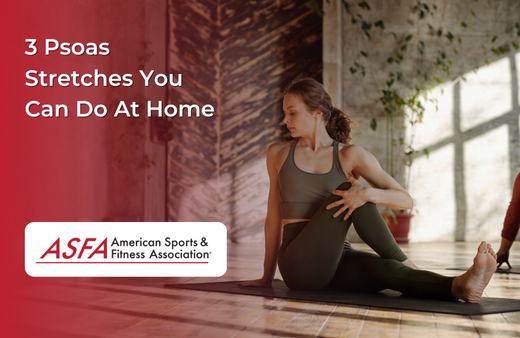The psoas muscle, also known as the iliopsoas, is a deep-seated muscle that plays a significant role in hip flexion and stability. When the psoas muscle becomes tight or tense, it can lead to discomfort, lower back pain, and limited hip mobility. Stretching the psoas muscle is essential for maintaining flexibility and preventing these issues. In this guide, we will explore the anatomy and function of the psoas muscle, the benefits of stretching it, and three effective psoas stretches that you can easily do at home.
Understanding the Psoas Muscle
The psoas muscle is a long, thick muscle that connects the lumbar vertebrae (lower spine) to the upper part of the femur (thigh bone). It is actually a combination of two muscles: the psoas major and the iliacus. Together, they make up the iliopsoas muscle group. The psoas muscle is crucial for several essential functions, including:
-
Hip Flexion: The psoas muscle is primarily responsible for lifting the thigh toward the abdomen, such as when you take a step while walking.
-
Spinal Stabilization: It helps stabilize the lower spine and pelvis during various movements.
Benefits of Stretching the Psoas Muscle
Stretching the psoas muscle offers several advantages:
-
Pain Relief: Stretching can alleviate discomfort and pain associated with a tight or tense psoas muscle, especially in the lower back and hips.
-
Improved Hip Mobility: Stretching the psoas muscle can help increase the range of motion in the hips, making movements like walking, running, and bending more comfortable.
-
Postural Correction: A flexible psoas muscle can assist in maintaining a healthy posture by reducing excessive arching of the lower back.
-
Reduced Risk of Injury: By keeping the psoas muscle supple and flexible, you can reduce the risk of strains and discomfort.
Three Effective Psoas Stretches for Home Practice
Incorporate these three psoas stretches into your daily routine to promote flexibility and alleviate tension:
1. Standing Psoas Stretch:
Instructions:
-
Stand up straight with your feet hip-width apart.
-
Take a step back with your right foot, positioning it behind you.
-
Bend your right knee to create a lunge position.
-
Keep your left knee slightly bent.
-
Tilt your pelvis slightly forward, pushing your hips forward.
-
You should feel a stretch in the front of your right hip and thigh.
-
Hold for 20-30 seconds, then switch sides.
-
Repeat 2-3 times on each side.
2. Kneeling Psoas Stretch:
Instructions:
-
Kneel on the floor with your knees hip-width apart.
-
Take a step forward with your right foot, bending your right knee at a 90-degree angle.
-
Keep your left knee directly under your left hip.
-
Gently lean forward, pushing your hips forward.
-
You should feel a stretch in the front of your right hip and thigh.
-
Hold for 20-30 seconds, then switch sides.
-
Repeat 2-3 times on each side.
3. Supine Psoas Stretch:
Instructions:
-
Lie on your back with your legs extended.
-
Bend your right knee and hug it toward your chest.
-
Hold your right knee with both hands.
-
Gently pull your right knee across your body toward your left shoulder.
-
You should feel a stretch in the front of your right hip.
-
Hold for 20-30 seconds, then switch sides.
-
Repeat 2-3 times on each side.
Tips for Effective Psoas Stretching
-
Warm-Up: Warm up your muscles before stretching by engaging in light aerobic activities for 5-10 minutes to increase blood flow and prepare your muscles for stretching.
-
Relax and Breathe: While stretching, focus on deep, slow breaths. Relax into the stretch and avoid tensing up.
-
Consistency: Make psoas stretching a regular part of your routine. Daily stretching can help maintain flexibility.
-
Listen to Your Body: If you experience pain while stretching, ease off and avoid pushing too hard. Stretching should be comfortable, not painful.
-
Consult a Professional: If you have chronic psoas issues or severe discomfort, consider consulting a healthcare or physical therapy professional for guidance.
Stretching your psoas muscle at home can be a simple yet effective way to alleviate discomfort, maintain hip mobility, and reduce the risk of injury. By incorporating these easy stretches into your daily routine and practicing consistency, you can keep your psoas muscle in good health and enjoy better hip flexibility and overall well-being.





